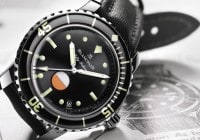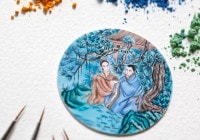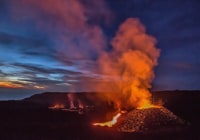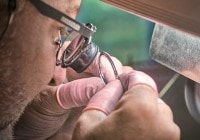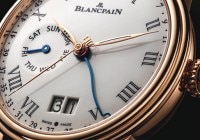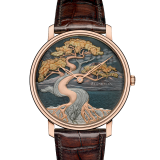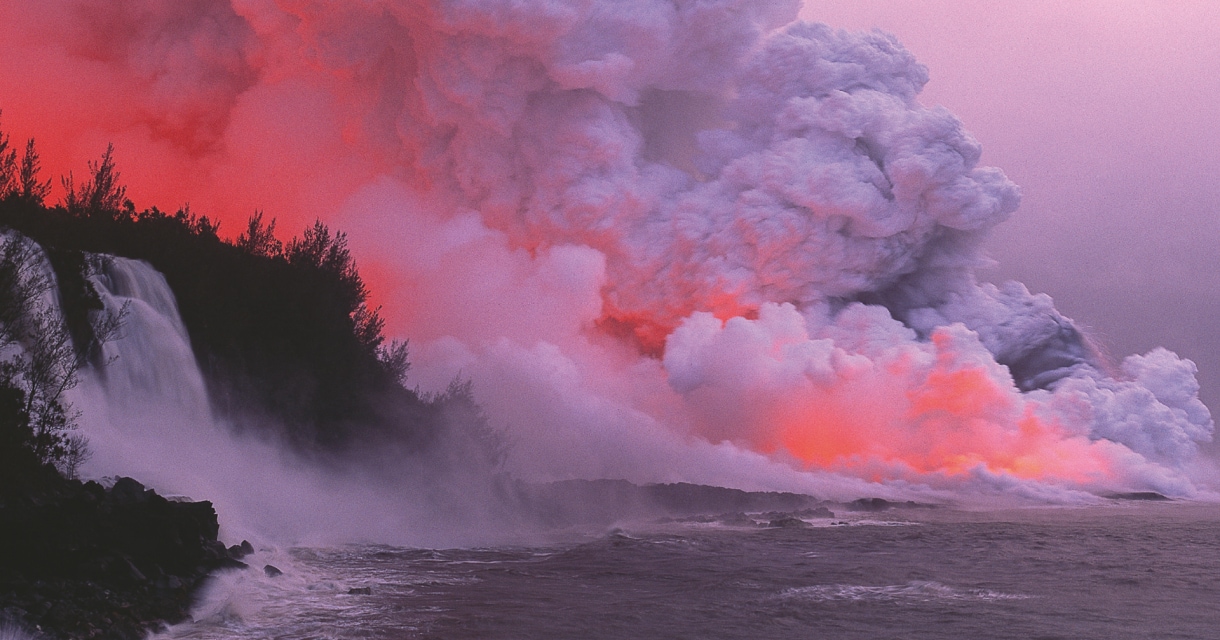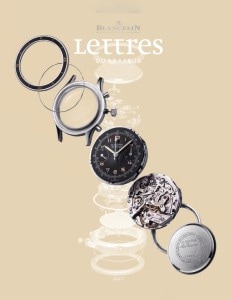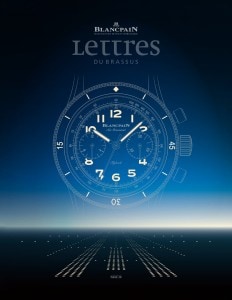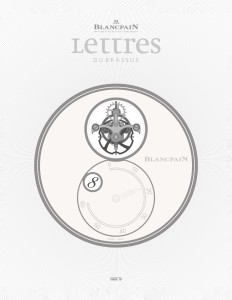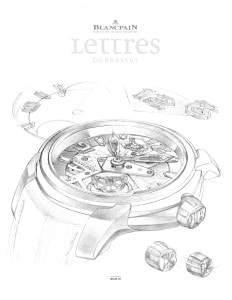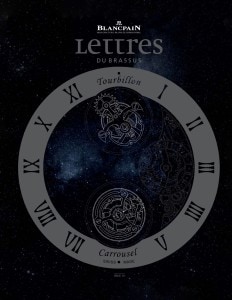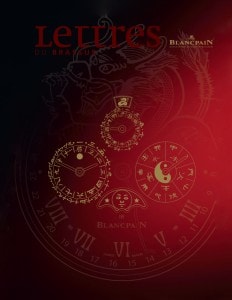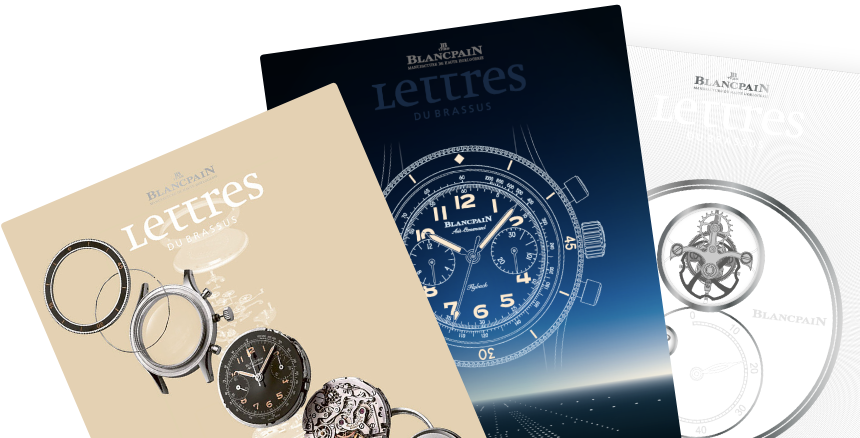
Search in Issues
Chapters
List of parts
Chapter 2
Métiers d’art Enamel paintings
Blancpain’s artists mix tradition and new creativity.
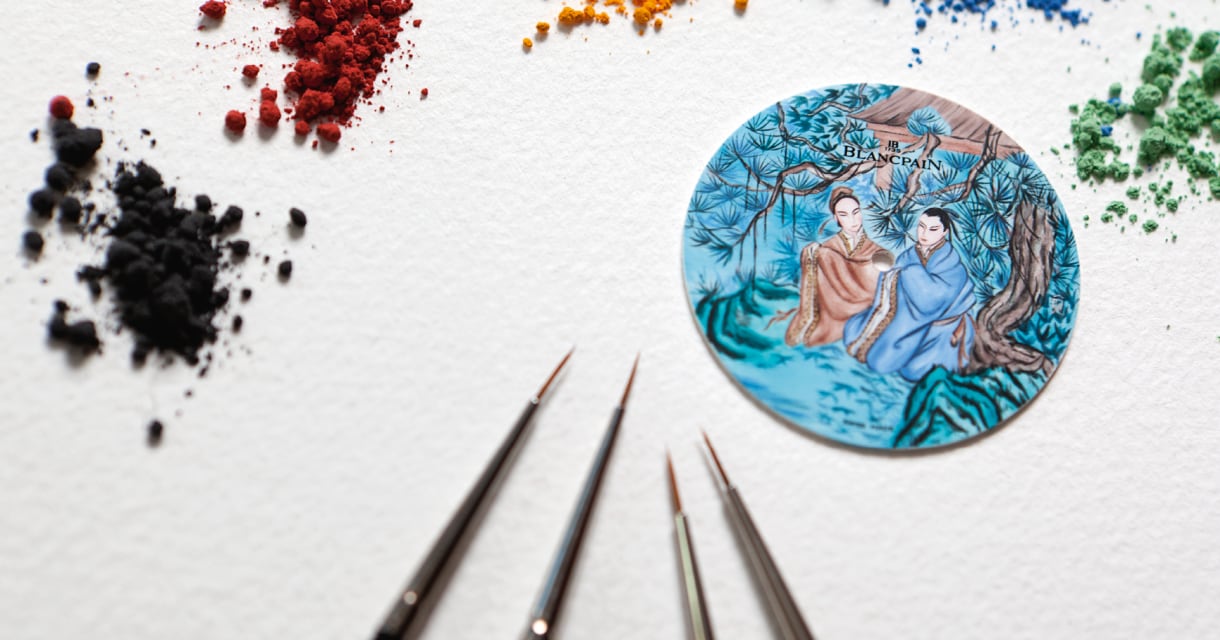
Miniature enamel painting draws upon A RICH HISTORY including arranging marriages.
Imagine yourself as a nobleman with a beautiful eligible daughter 500 years ago. Pleasant thought isn’t it? Of course, you have an important task before you, finding her a suitable match. Naturally your position, wealth, and even terms of a dowry would be known or could be easily presented in a letter. But what about her appearance? Tragic that mobile phone selfies won’t come along for another half millennium. The solution: a miniature portrait in enamel to accompany a letter.
In the mid-1600s, particularly in France, miniature enamel portraiture became extremely popular, not only as a way of introduction to potential suitors, but as a form of personal memento. Indeed, many officers fighting distant from home carried enamel portraits of their families, much as soldiers today carry photos tucked away in wallets. The art form flourished until upended by the technology of photographs.
Nonetheless, during its heyday the techniques and the savoir faire for miniature enamel portraiture found fertile ground outside of France in Geneva. Initially, it flourished as a way to bring value to early, not terribly precise, timepieces. The development of watchmaking can be thought of as having two distinct early phases. The first came with the invention of the mainspring, which as a source of stored energy, enabled the creation of the first watches. However, these primitive efforts lacked effective regulating elements. Thus, precision timekeeping was not really part of the bargain. Indeed, it was common during this period for watches to have only an hour hand, since it was rather pointless to pretend that a minute hand would convey any useful information. It was only with the invention of the balance wheel by Dutch mathematician Christiaan Huygens in 1674, that precision came to watchmaking.
During the interval between the invention of the mainspring and the invention of the balance wheel, miniature enamel painting became interwoven with watchmaking. If a watch lacked value as a timekeeping instrument, adding elaborate decoration, most often in the form of enamel painting, served to bestow importance upon the timepiece. Thus, enamel painters took root in Geneva and established the grand Swiss tradition of watch enameling.
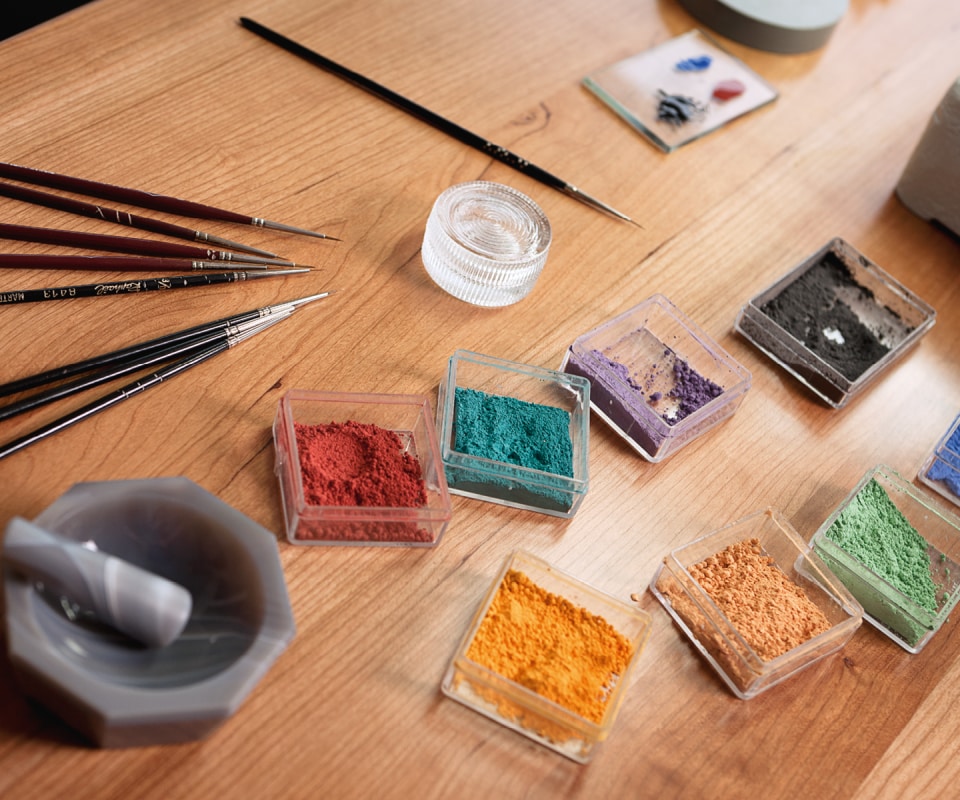
Blancpain’s ARTISTS are FREE to find new motifs and styles.
Today, miniature enamel painting has become an
extremely rare art form. Less than a handful of watch houses offer métiers d’art pieces featuring it and, of those, fewer still actually practice it within their walls. Thus, with its in-house enamelers in its Le Brassus studio, Blancpain indeed sets itself apart in its dedication to métiers d’art.
It is the head of the Métiers d’Art atelier, Christophe Bernardot, who leads the enamelers at Blancpain. Christophe is a classically educated artist who attended the École régionale des Beaux-Arts in Besançon, less than 40 minutes distant from the Vallée de Joux. There he learned the fundamental techniques for enamel painting. Initially, however, he went to work not in the horological world, but for the renowned house of Porcelaine de Sèvres. When he joined Blancpain in Le Brassus, the studio had already established its fame with artistic engraving. With his arrival came a broad expansion of Blancpain’s artistic savoir faire as he brought not only enamel painting, but damascening and shakudō techniques. Blancpain now stands in rarified air in practicing all of these forms of artistic expression under its roof.
In many ways, Blancpain’s enameling is utterly classic, respecting the finest Swiss traditions. There are, however, two respects in which Christophe does part company with that tradition and the handful of Swiss artisans who still are able to carry the enamel banner. The first departure is somewhat technical. Swiss enameling generally calls for a last step which places a transparent protective layer, called fondant, over the portrait or image. Historically this made sense as many enamel works were placed on the outside of the watch on the case. Thus exposed to the elements and handling, they certainly required protection. In Blancpain’s case, enamel art is uniquely brought to the dial. Since that is a completely protected and sealed environment, adding a fondant layer not only would be unnecessary but would risk diminishing somewhat the vibrancy of the painting. His second departure is artistic. Today, the few remaining Swiss artists still cling to motifs from centuries ago. Both Marc A. Hayek and he believe in unbounded creativity and Christophe has been freed to find new motifs and styles for these miniature pieces of dial art. Incidentally, it’s not that Christophe abjures the stylized pieces from the past or that he has not painted some; off to the side of his workbench in Le Brassus is a glass case filled with some of his marvelous examples of classically themed enamels including a breathtaking miniature reproduction he painted earlier in his career of Jean Dominique Auguste Ingres’ 1814 celebrated work La Grande Odalisque (“The Grand Concubine”). Notwithstanding his evident talent in painting these stunning works, Christophe refuses to allow his art to be imprisoned by the past.
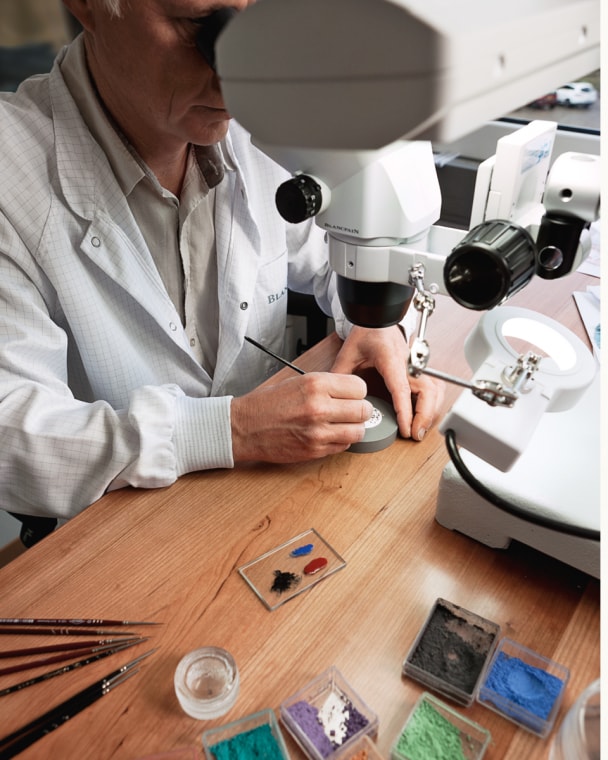
Chef d’atelier Christophe Bernardot painting in the studio.

An early stage in creating the work, line drawing of the figures.
The first stage of the work is PREPARING THE SURFACE of the dial.
The process of bringing painted enamel to a watch dial is extraordinarily involved. It begins with the fabrication of a surface for the painting. Blancpain’s enamel dials use as a base a solid gold disk. To create an enamel surface for painting upon the gold base, layer after layer of enamel must be applied to both sides of the gold disk. Why both sides? It is to fight deformation. Each application of an enamel layer requires a firing in an 800 ºC oven. If enamel were present on only one side, there would be a risk that the unprotected gold on the back would heat and cool differently from the front with warping as the result. After several layers have been applied, Christophe meticulously polishes the top surface. Full fired enamel, called grand feu, has a natural tendency to become somewhat rounded or bombé in shape. For an unpainted dial, this natural bombé form is part of the allure as it brings visual interest. The unpainted grand feu enamel dials found throughout Blancpain’s collections have this form. But a bombé surface is not a suitable canvas for a painting. Nor is one that has any trace of even micro cracks from the oven firing. Thus, Christophe devotes enormous effort to polishing in order to ensure a perfectly flat flawless surface.
In most instances, before any paintbrush touches the finely prepared surface of the dial, Christophe has prepared sketched studies of the image he wants to create. Often multiple trials are evaluated. Christophe is looking for balance, not only with respect to the design itself, but also with regard to the way in which that design relates to other elements on the dial. Keep in mind that, after all, this is a watch dial and that, in addition to the image or portrait, there may be indexes (a highly variable factor as some of his dials have no indexes, others have some but not all, still others have all twelve) and the legend “Blancpain”. It is vital, therefore, that these different elements be harmonious with one another. As well, in some cases, the dial image has been specially requested so that a preparation of a study becomes important before further work starts in order to ensure that the design is satisfactory.
Once the layout of the design has been decided, the next step is the preparation of the colors. Enamel powder is heated until it becomes a colorless liquid. Then different metallic oxides are added to produce the desired colors. Christophe has confected special recipes for some of his colors that he considers “top secret”. Once the colors have been readied, the actual painting can begin. Owing to the small scale of a watch dial, he must work with staggeringly fine brushes and view his work with magnification. In a nod to modernity, unlike his forebears hundreds of years ago, Christophe works with the aid of a binocular microscope.
Since the colors are enamel themselves, the painting must be followed by oven firing.
Freed from slavish devotion to historic themes, Christophe’s selection of subject matters has been boundless. Asian scenes, flowers, Lake Geneva and the Lavaux vineyards (a UNESCO World Heritage site), abstract fantasies, butterflies, and more have left the workshop. Every single dial is unique and no design will ever be repeated. Thus, each owner of one of these métiers d’art timepieces can be assured that he or she owns a limited edition of one piece.
The Swiss-themed Lavaux dial not only debuts a new motif but novel techniques as well. The dial portrays the Lavaux vineyards which rise steeply from Lake Geneva, not far from Blancpain’s administrative offices in a suburb of Lausanne. To capture the scene of vineyards, lake, mountains and sky, Christophe wanted to imbue the dial with the spirit of an Impressionist watercolor. To achieve that special allure of a watercolor, he adapted his method of mixing colors so as to dilute them.


Mixing the colors.
Each enamel dial is a LIMITED EDITION OF ONE.
Some of the enamel dials are created using a technique called champlevé. Instead of a completely flat surface upon which colors are painted, champlevé begins with carving out material, creating raised and lowered zones on the dial, separated and framed by a thin gold border at the edges of the carved areas. The object is to bring an extra dimension of visual depth to the design. The carving is done with a form of awl called a burin. After the carving is completed, using a stone, the lowered zone is carefully polished so that it will be perfectly smooth.
This champlevé technique was brought to the creation of an edelweiss themed dial. The edelweiss, of course, is the national flower of Switzerland. The dial features two edelweiss flowers set against a white background. Working upon the gold disk, Christophe carved down what were to become the background areas of the dial, leaving fine gold borders surrounding the petals and leaves of the flower. Through this method not only did he create the fine gold borders for the edelweiss, but he, in effect, “raised” the flower elements of the dial above their lowered surrounding background. When he applied the white enamel to the petals, Christophe fired that layer at a lower than normal temperature. This imported a touch of graininess to the petals, mirroring the fuzzy texture of edelweiss petals in nature. For the green leaves, he formulated a special green color that is slightly transparent, mimicking the waxy look of edelweiss leaves.

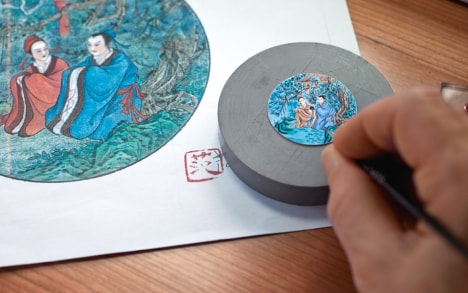
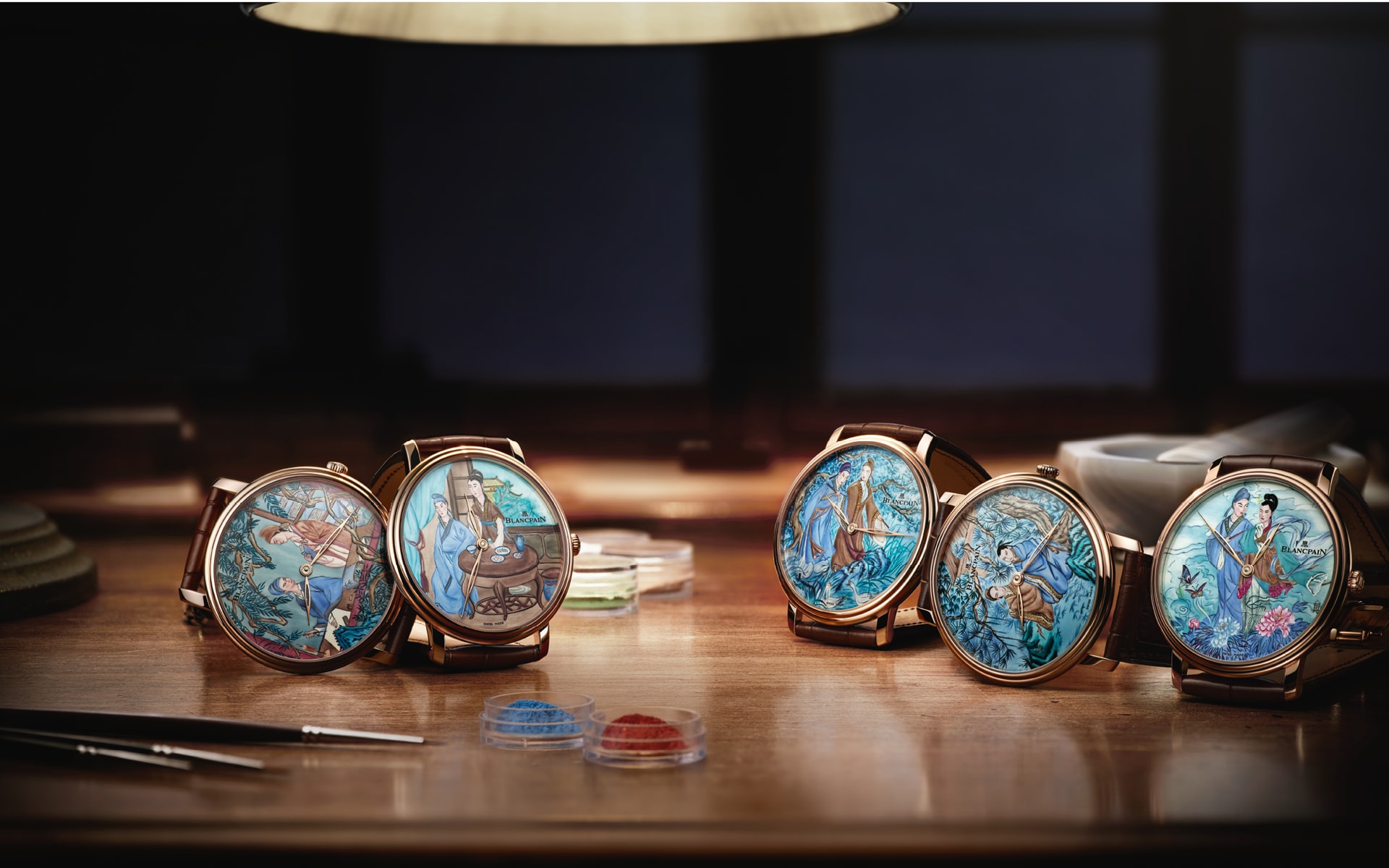
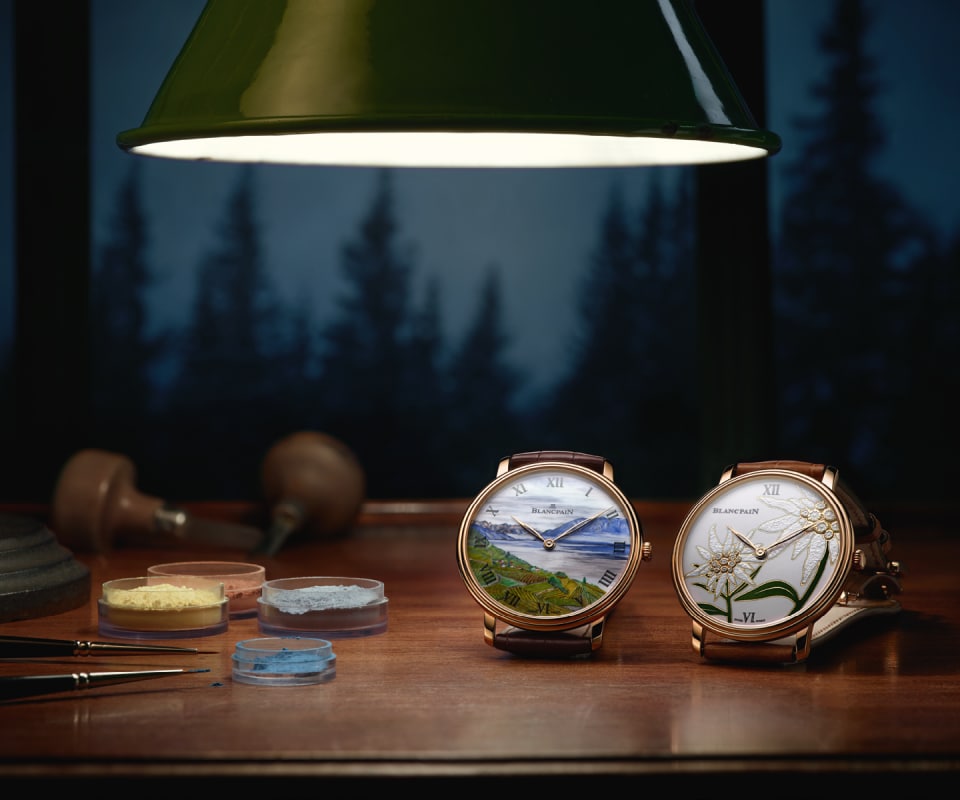
Included in the ENAMEL REPERTOIRE is the technique of champlevé.
Further distinguishing this extraordinary composition, are the centers of the two flowers. In nature, the center of an edelweiss has a number of gold colored spikey small florets. To fashion the centers, Christophe drew upon his engraving repertoire. Beginning with a disk of gold, he finely carved the florets, leaving small central areas in each to be filled with enamel. Once he had completed the carving and enameling of the two centers, they were attached to the dial as appliques, held in place by microscopically fine feet inserted into equally miniscule holes. Both the carving and the attachment bring even greater visual depth to this unique dial.
One final step remained. The Blancpain legend; the indexes at 12 and 6; and the notation “Swiss Made” were all hand painted on the dial.
The Blancpain Métiers d’Art studio in Le Brassus is rare in Switzerland with its assembly of artisans skilled in an unmatched range of art forms and techniques. Equally important as their talent is the creative freedom which Blancpain has given them to explore and expand the boundaries of watchmaking artistic expression. •

